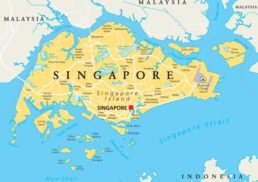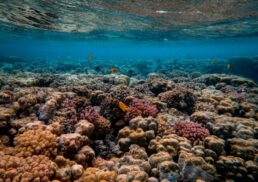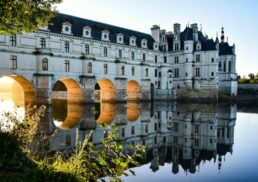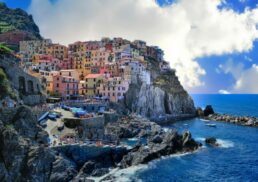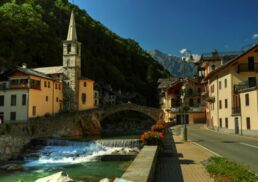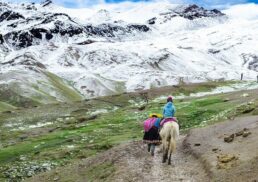Bordered by seas and defined by mountains, the Balkan Peninsula is more than a geographic term; it’s a region steeped in history and cultural complexity. If you’re seeking to understand Balkan, this article illuminates its countries, landscapes, and the intricate mosaic of influences that shape it. Embark on a concise exploration that captures the spirit of Balkan, guiding you through the essence of its varied nations and their shared heritage within the tapestry of southeastern Europe.
Table of Contents
Key Takeaways
The Balkan Peninsula features a rich mosaic of cultures, languages, and histories, stretching from the Adriatic to the Black Sea, with mountainous terrain playing a significant role in its geography.
Countries like Albania, Bosnia and Herzegovina, Bulgaria, Croatia, Kosovo, Moldova, Montenegro, North Macedonia, Romania, Serbia, and Slovenia each boast unique identities, cultures, and contributions to the region’s diversity.
The Balkans’ historical tapestry includes ancient civilizations, medieval empires, the Ottoman era, and the modern-day nation-states, with a complex relationship with the European Union comprising current members, candidates, and potential future members.
Understanding the Balkans
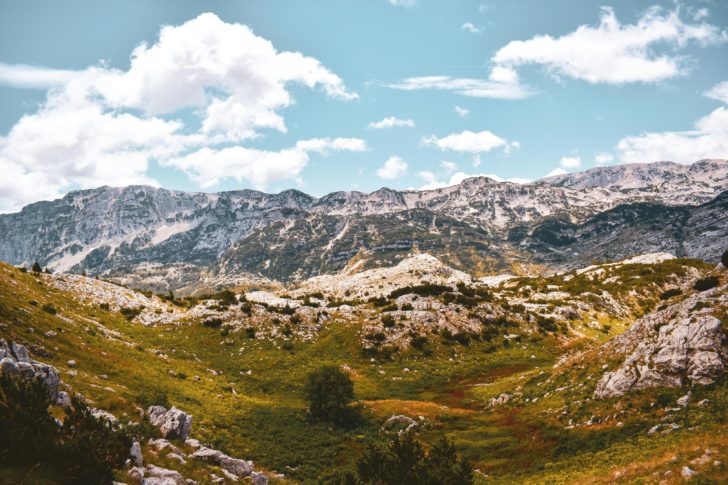
The term ‘Balkan’ originates from the Turkish language, meaning ‘chain of wooded mountains’. This is fitting, given the region’s rugged terrain and the significant role mountain ranges play in its geography. The concept of the Balkan Peninsula was first brought to light by the German geographer August Zeune in 1808. The area spans southeastern Europe, from the Adriatic Sea in the west to the Black Sea in the east, encompassing countries from:
Albania
Bosnia and Herzegovina
North Macedonia
Bulgaria
With its northern borders often disputed, the Balkan Peninsula is generally traced from the Black Sea along the river Danube to Belgrade, extending along the river Sava to Slovenia. This geographical positioning has historically made the Balkan region a crossroads of various cultures, and a center of political, military, and economic activity. It’s not surprising then, that the term ‘Balkanization’ emerged from the region’s history, symbolizing the fragmentation or division of a region or state into smaller regions or states that may be hostile or uncooperative with each other. The southeast Europe spanning area of the Balkan Peninsula showcases this complex history.
In essence, understanding the Balkans means recognizing its complexity – a region where the Western Balkans meet the Eastern Balkans, where the Adriatic Sea meets the Black Sea, and where cultures, languages, and histories intertwine. This peninsula, in the southeastern part of the European continent, is a testament to the diversity and resilience of the Balkan peoples, who have navigated a tumultuous history to shape the Balkans we know today.
The Countries of the Balkan Peninsula
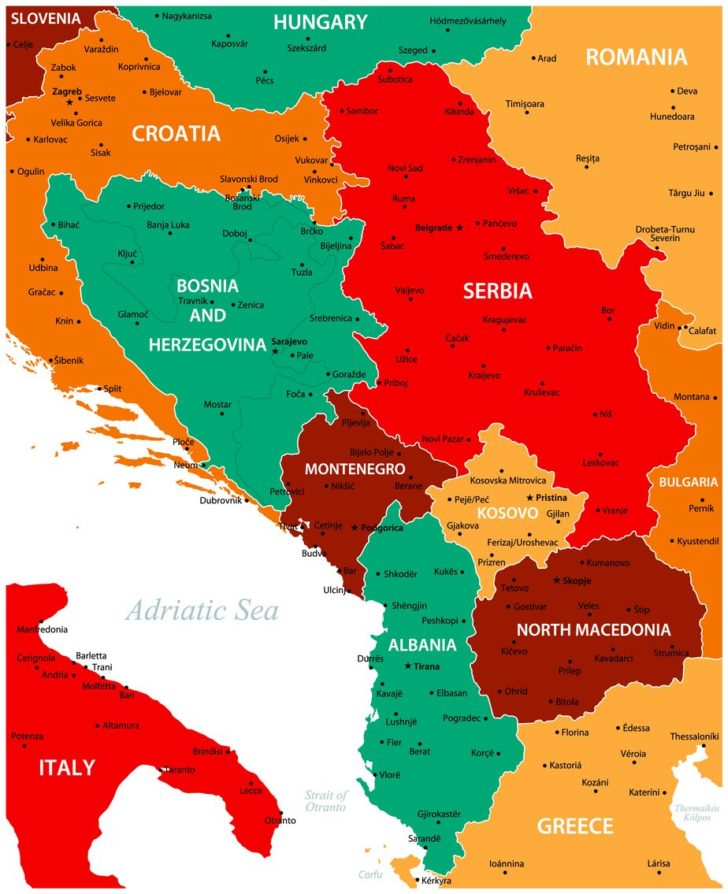
The Balkan Peninsula is like a vibrant quilt, each patch representing a different Balkan country, each with its own unique history, culture, and political system. The countries of the Balkan Peninsula include some Western Balkan countries such as:
Slovenia
Croatia
Bosnia and Herzegovina
Serbia
Montenegro
Kosovo
North Macedonia
Albania
Greece
Each of these countries has its own unique stories to tell.
We will examine each of these countries in detail, from Albania, known as the Land of Eagles, to Slovenia, a captivating blend of Alpine Charm and Mediterranean Flair.
Albania: Land of Eagles
Albania, known as the Land of Eagles, is a place of rich history and diverse culture. This unitary parliamentary constitutional republic has a population of approximately 3 million people, with Tirana as its capital and Albanian as its official language.
Despite the country’s small size, Albania’s influence is felt across the Balkans, from its language—a non-Slavic language—to its history, which has shaped the region in unique ways.
Bosnia and Herzegovina: A Cultural Mosaic
In contrast, Bosnia and Herzegovina, with a population of about 3.8 million people, showcases a unique mixture of Eastern and Western influences. A cultural mosaic, the country’s family structures and societal norms reflect a collectivist cultural orientation, with extended family living common and grandparents often playing a significant role in childcare.
With elders held in high regard within the family unit, Bosnia and Herzegovina stand as a testament to the esteemed status of its cultural hierarchy.
Bulgaria: From Thracians to Modern Bulgarians
Bulgaria, on the other hand, takes us on a journey from antiquity to the present day. The Thracians, known for their advanced metalworking and fierce warriors, were the original inhabitants of what is now Bulgaria. The cultural and territorial dominance of the Thracians was challenged by the influence of Hellenic culture through Greek colonies and trade.
But the establishment of the First Bulgarian Empire in 681 AD introduced a Slavic and Bulgar cultural fusion that dominated the region. To this day, the Bulgarian ethnic identity has been preserved over time, from the power and influence of the Second Bulgarian Empire to the country’s present-day iteration.
Croatia: The Adriatic Gem
Croatia, the Adriatic Gem, boasts a stunning coastline along the Adriatic Sea, featuring breathtaking beaches, coves, and over a thousand islands. But Croatia is not just about sun and sand. The country’s inland regions offer a contrasting landscape with lush forests and rolling hills, such as those found in the famed Plitvice Lakes National Park.
Historical treasures, such as the ancient Roman ruins like the Diocletian’s Palace in Split and the amphitheater in Pula, make Croatia a must-visit destination for history buffs.
Kosovo: A Young Nation with Ancient Roots
Kosovo, a young nation with ancient roots, has a population of approximately 1.9 million people, predominantly composed of Albanians accounting for 88% and Serbs making up 7%. Despite its youthful status, Kosovo is rich in history and culture, with its official languages being Albanian and Serbian, reflecting its ethnic diversity. However, Kosovo’s independence remains disputed, with recognition from only about half of the United Nations member states.
Moldova: Eastern Balkans’ Hidden Treasure
Moldova, the Eastern Balkans’ Hidden Treasure, is:
a parliamentary representative democratic republic
with a population of about 3.4 million people
the official language is Moldovan, a variety of Romanian, making it a unique linguistic enclave in the region.
Despite its small size and often-overlooked status, Moldova’s rich culture and history make it a gem in the heart of the Balkan Peninsula.
Montenegro: The Wild Beauty
Montenegro, the Wild Beauty, is a parliamentary representative democratic republic known for its breathtaking landscapes and diverse culture,. With a population of just 610,000 people, Montenegro may be small, but its impact on the region is significant.
The country’s official language is Montenegrin, reflecting the country’s unique cultural identity.
North Macedonia: A Blend of Cultures
North Macedonia, a Blend of Cultures, is home to approximately 2 million people, with ethnic Macedonians accounting for around 64% of the population and the Albanian minority comprising about 25%. The country’s official language is Macedonian, underscoring the Slavic element of the country’s cultural heritage.
This diversity is a testament to North Macedonia’s cultural richness and its unique position in the Balkan tapestry.
Learn more, visit A Genetic History of the Balkans from Roman Frontier to Slavic Migrations.
Romania: Home of Dracula and More
Romania, Home of Dracula and More, is a semi-presidential representative democratic republic. It joined the EU in 2007, marking a significant milestone in its integration with European institutions.
Steeped in folklore and myth, Romania is a country where ancient and modern coexist, offering a unique experience for visitors.
Serbia: The Crossroads of Europe
Serbia, the Crossroads of Europe, is a parliamentary democracy with a population of about 7 million people and Serbian as its official language.
Strategically located at the crossroads of Central Europe and the Balkan Peninsula, Serbia’s rich history and vibrant culture have left a lasting impact on the region.
Slovenia: Alpine Charm Meets Mediterranean Flair
Lastly, Slovenia, where Alpine Charm meets Mediterranean Flair, is a green country where the Pannonian, Alpine, and Mediterranean worlds converge, offering diverse natural, cultural, and culinary experiences. Visitors can engage in boutique experiences labeled ‘Slovenia Unique Experiences’, such as the melodious forest adventure or the pastoral heritage tour at Velika Planina plateau.
The capital city, Ljubljana, is known for its lively streets and squares, as well as its cultural traditions and contemporary art.
Balkan Landscapes and Geography
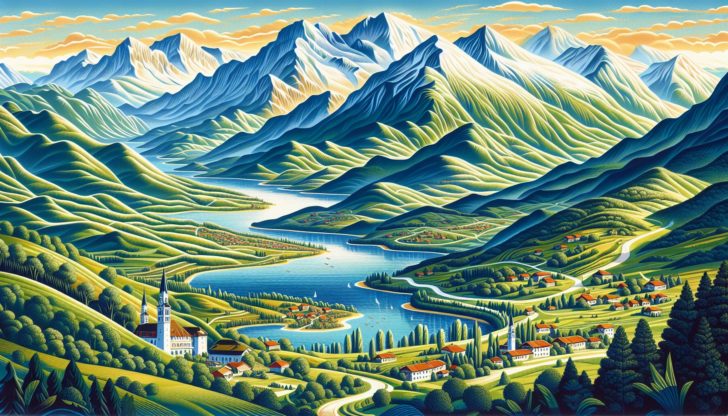
The Balkan Peninsula is a geographical wonder, with landscapes as diverse as its cultures. From significant mountain ranges such as the Balkan Mountains, the Rila-Rhodope massif, the Dinaric Alps, and the Pindus range, to the stunning coastlines shaped by the Adriatic, Ionian, and Black Seas, the Balkans is a paradise for nature lovers and adventurers alike.
Mountain Ranges: The Backbone of the Balkans
The Balkan Peninsula is home to several mountain ranges, some reaching significant elevations. Peaks such as Musala Peak in Bulgaria, the highest point in the Balkans standing at 2,925 meters above sea level, offer breathtaking views and are a testament to the region’s stunning natural beauty,.
Rivers: Lifelines of the Region
The Balkans is also known for its rivers, with the Danube and Sava being significant lifelines of the region. These rivers not only provide vital resources but also shape the landscape, carving out valleys and gorges through the rugged terrain.
Coastal Areas: Where the Balkans Meet the Sea
The coastal areas of the Balkan Peninsula, shaped by the Adriatic, Ionian, and Black Seas, offer a contrasting landscape to the mountainous interior. Here, Mediterranean conditions prevail, contributing to higher rainfall and the formation of karst landscapes.
From the stunning Ionian coastline of Greece to the sandy beaches of Croatia, the Balkans’ coastlines are as diverse as the countries themselves.
The Rich History of the Balkans
The history of the Balkans is as diverse and complex as its geography. From ancient tribes and civilizations to empires and modern nation-states, the Balkans has seen it all. This rich and turbulent history has not only shaped the region’s identity but also its landscape, from the rugged mountain ranges to the picturesque coastlines.
Antiquity: Illyrians, Thracians, and Greeks
In antiquity, the Balkans were a melting pot of cultures, with groups like the Illyrians, Thracians, and Greeks coexisting, developing extensive trade networks, and founding numerous colonies. These civilizations have left significant cultural legacies that influenced the history of the region, with their impacts still discernible in various forms and traditions.
Middle Ages: Byzantine Influence and the Rise of Empires
The Middle Ages saw the rise of various empires in the Balkans, including the Roman Empire, each adding unique layers to the historical complexities of the region.
The Byzantine Empire’s influence extended into the Balkans during this period, significantly impacting the region’s culture and religion,.
Ottoman Era: Conquest and Coexistence
The Ottoman Empire’s conquest of the Balkans in the 14th century, led by the Ottoman Turks, marked a significant shift in local governance, society, and culture. The Millet system instituted by the Ottomans allowed for religious and ethnic minorities to self-govern to a limited degree, facilitating the coexistence of various groups within the Balkans.
20th Century: World Wars, Communism, and Independence
The 20th century in the Balkans was a period marked by significant upheavals. The occurrence of two World Wars and the societal and geopolitical changes they brought about profoundly affected the region. In the wake of World War II, countries in the Balkans such as Albania and Yugoslavia saw the establishment of communism, leading to major social transformations and isolation from Western influence.
The tide of history eventually led to the dismantling of former empires and the rise of independent nation-states throughout the Balkan Peninsula.
Culture and Traditions
The cultural tapestry of the Balkan Peninsula is as colourful and intricate as its history. From languages and religions to cuisine and celebrations, the Balkans is a melting pot of diverse traditions.
We will delve into the captivating cultural heritage of this remarkable region.
Languages: A Linguistic Mosaic
The Balkan Peninsula is a linguistic mosaic, home to a diverse range of languages from the Indo-European family such as:
Germanic
Albanian
Hellenic
Indo-Aryan
Slavic
Romance groups
as well as Turkic languages. The region’s rich historical linguistic diversity is reflected in the languages spoken today, with each one having its unique story to tell.
Religion: A Melting Pot of Faiths
The Balkans region, a part of eastern Europe, is known for its religious diversity, with Christianity, Islam, and other faiths coexisting. Each Eastern Orthodox country in the Balkans traditionally has its own national church. The Byzantine Empire fostered the spread of Orthodox Christianity, while the Ottoman Empire introduced Islamic institutions.
This rich religious diversity is a testament to the region’s history of coexistence and tolerance.
Cuisine: Flavors from East and West
Balkan cuisine is a testament to the region’s history of cultural exchange. Characterized by a rich fusion of European and Western Asian influences, Balkan dishes offer a unique gastronomic experience. Typical ingredients include:
pickled vegetables
a variety of spices
feta cheese
kajmak, a creamy dairy product similar to clotted cream.
Iconic dishes such as ćevapi and pljeskavica, introduced during the Ottoman era, as well as Greek-influenced dolma and the sweet baklava, demonstrate the gastronomic blend of the Balkans, with influences from European Turkey.
Celebrations: Festivals and Traditions
The Balkan Peninsula is rich in various festivals and celebrations that reflect its diverse cultural tapestry. From Serbia’s Orthodox Christmas to Albania’s Summer Day and Mostar’s Bridge Diving Festival, each event offers a unique insight into the region’s cultural heritage and traditions.
The Balkans and the European Union
The relationship between the Balkan Peninsula and the European Union (EU) is a fascinating one. As some Balkan countries have become EU members, others are candidate countries, and some potential future members, the region has seen significant political, economic, and social changes over the years.
We will examine the Balkans’ interaction with the EU and its subsequent effect on the region.
Current EU Members: Bulgaria, Croatia, Romania, and Slovenia
Bulgaria and Romania became members of the European Union on January 1, 2007. Croatia, on the other hand, joined the EU on July 1, 2013, and has since joined both the Schengen area and the eurozone in 2023. Leveraging its EU membership, Croatia has become an important player in regional energy diversification with the development of the EU-funded LNG terminal on the island of Krk.
Slovenia, meanwhile, utilizes the EU budget to support projects in infrastructure, research, and environmental protection.
Candidate Countries: Albania, Montenegro, North Macedonia, and Serbia
Albania, Montenegro, North Macedonia, and Serbia are currently candidate countries for EU membership. Albania applied for EU membership in April 2009 and was recognized as a candidate country in June 2014, with the first intergovernmental conference occurring in July 2022. The country is focusing on major reforms, particularly in its justice systems, public administration, and measures against corruption and organized crime to satisfy EU accession requirements.
Potential Future Members: Bosnia and Herzegovina and Kosovo
Bosnia and Herzegovina and Kosovo are potential future members of the European Union, aspiring to join the supranational union. However, obstacles to their EU integration include:
The need for political and economic reforms
Meeting the EU’s stringent accession criteria
Economic underdevelopment
Political instability
These challenges are faced by both entities on their path toward EU accession.
Both Bosnia and Herzegovina and Kosovo need to address corruption and strengthen their legal and institutional frameworks to advance their EU agenda.
Traveling in the Balkans
Traveling in the Balkan Peninsula is an adventure in itself. From navigating the diverse landscapes to exploring the rich history and culture of each country, every journey in the Balkans is a unique experience. Whether you’re planning a luxurious cruise in Croatia or a tailor-made trip covering five countries of the former Yugoslavia, the Balkans offers a variety of experiences to suit every traveler’s taste.
We will provide some practical information and tips for your journey through the Balkans.
Getting Around: Transportation Options
Getting around the Balkans can be quite an adventure, with various transportation options available. Buses serve as the primary mode of transportation between major cities and towns in the Balkans, though service quality varies by region. Local and international ride-hailing services such as Bolt and CarGo have grown in popularity in Balkan urban areas, offering a modern alternative to traditional taxis.
Train travel in the Balkans is known for its scenic value, though it is often characterized by slower speeds and less frequent service.
Safety Tips for Travelers
Traveling in the Balkans is generally safe, but like any tourist destination, it is important to stay vigilant and take necessary precautions. Here are some tips to keep in mind:
Be vigilant of personal belongings and exercise caution against petty crimes like pick-pocketing, particularly in crowded urban centers.
Avoid displaying sensitive national symbols or souvenirs that could be misinterpreted or seen as taking sides in the Balkans’ ethnic divide.
Discussions about the ethnic origins or national identity of North Macedonians can be a sensitive topic and are best avoided by travelers.
Furthermore, LGBT travelers in the Balkans may want to consider being discreet in public displays of affection, particularly in conservative or traditional areas.
Must-See Attractions: Natural Wonders and Historic Sites
The Balkan Peninsula is home to a plethora of natural wonders and historic sites that are a must-see for any traveler. Some highlights include:
Montenegro’s Venetian towns of Kotor and Perast
The island-turned-hotel at Sveti Stefan
The mausoleum of King Petar
The stunning Adriatic coast
The renowned Ostrog Monastery
The Balkans offers a unique blend of natural beauty and rich history that is sure to captivate any traveler.
Summary
From its rugged mountain ranges and stunning coastlines to its cultural tapestry and rich history, the Balkan Peninsula embodies diversity and complexity. Whether you’re exploring the ancient ruins of Romania, the cultural mosaic of Bosnia and Herzegovina, or the stunning Adriatic coast of Croatia, every journey in the Balkans is a unique adventure. As we conclude our exploration of this fascinating region, we hope that you’ve been inspired to discover the Balkans for yourself, to experience its natural beauty, delve into its history, and immerse yourself in its vibrant cultures.
Frequently Asked Questions
What is the origin of the term ‘Balkan’?
The term ‘Balkan’ originates from the Turkish language, meaning ‘chain of wooded mountains’. It was first used in 1808.
How many countries are there in the Balkan Peninsula?
There are 11 countries in the Balkan Peninsula, including Slovenia, Croatia, Bosnia and Herzegovina, Serbia, North Macedonia, Montenegro, Albania, Bulgaria, Romania, Greece, and Kosovo.
What are some of the major religions in the Balkans?
The major religions in the Balkans include Christianity, Islam, and other faiths, showcasing the region’s religious diversity.
Which countries in the Balkan Peninsula are EU members?
Bulgaria, Croatia, Romania, and Slovenia are the countries in the Balkan Peninsula that are EU members.
What are the transportation options in the Balkans?
In the Balkans, buses are the main mode of transportation between major cities, with varying service quality, while urban areas have seen a rise in popularity of local and international ride-hailing services.



